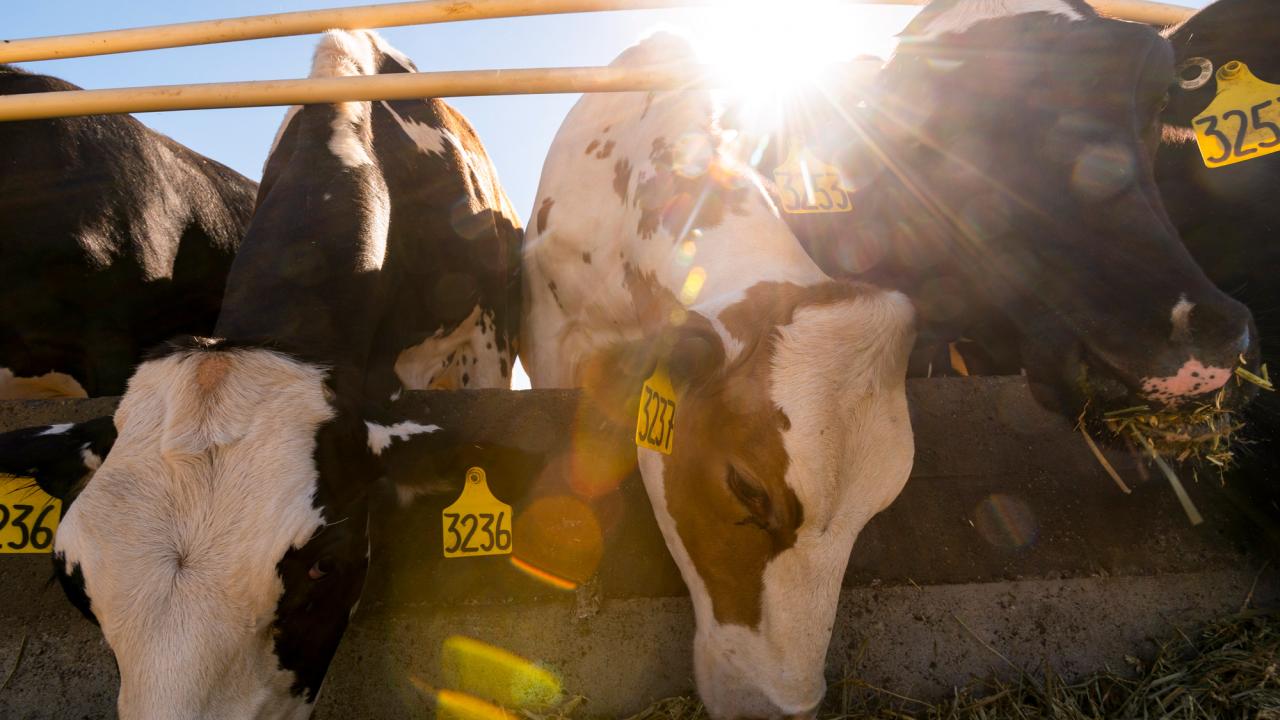
America Signs Global Climate Agreement to Crack Down on Farming - Slay News
Democrat President Joe Biden's administration has signed a global agreement with 12 other nations to crack down on farming to "save the planet" from "climate change."
 slaynews.com
slaynews.com
Democrat President Joe Biden’s administration has signed a global agreement with 12 other nations to crack down on farming to “save the planet” from “climate change.”
The agreement, led by the United States, has been signed by several major cattle and food-producing states including Australia, Germany, Argentina, Brazil, Chile, and Spain.
The nations signed onto a commitment to place farmers under new restrictions to reduce emissions of methane gas.
Biden’s “climate czar” John Kerry is representing America in the pledge.
The Global Methane Hub announced in a press release that agriculture and environmental ministers and ambassadors from 13 countries, including the U.S., have signed a commitment that pledges to reduce methane emissions in agriculture.
Interestingly, China and Russia are not mentioned at all in these anti-food policies.
According to the press release issued by these nations:
Conference participants included the Food and Agriculture Organization of the United Nations, the Climate & Clean Air Coalition, the Inter-American Institute for Cooperation on Agriculture, the World Bank, the Organization for Economic Co-operation and Development, and the Inter-American Development Bank.Last month (in April 2023), the Global Methane Hub collaborated with the Ministries of Agriculture of Chile and Spain to convene the first-ever global ministerial on agricultural practices to reduce methane emissions.
The ministerial brought together high-ranking government members to share global perspectives on methane reduction and low-emission food systems.
The gathering led to a statement in which the nations committed to support efforts to improve the quality and quantity of, and access to, finance for climate change adaptation and mitigation measures in the agriculture and food sectors and to collaborate on efforts aimed at lowering methane emissions in agriculture and food systems.
Along with the UN, the World Bank has become increasingly vocal about a coming famine.
On May 22, the World Bank issued a white paper titled Food Security Update: World Bank Response to Rising Food Insecurity.
Starting in September of last year, the director of the United Nations World Food Program has also been putting out dire warnings about a coming global famine.
Accoridngtin to the World Bank, the UN, the Biden admin, the World Economic Forum (WEF), and their allies, modern food production is destroying the planet by causing “global warming.”
Therefore, according to the green agenda, farming must be targeted because it produces methane which supposedly harms the environment.
“Food systems are responsible for 60% of methane emissions,” said Marcelo Mena, CEO of Global Methane Hub.
“We congratulate countries willing to take the lead in food systems methane mitigation and confirm our commitment to support this type of initiative with programs that explore promising methane mitigation technologies and the underpinning research of methane mitigation mechanisms to create new technologies.”
ohn Kerry is also very excited about taking valuable, productive farmland offline, reducing the size of cattle herds, and turning our food-production systems over to technocrats and globalists offering vague promises of “new technologies.”
As Slay News recently reported, Kerry is calling for farmers to stop growing food in order to meet the administration’s radical “net zero” goals for lowering “emissions.”
Kerry, Biden’s Special Presidential Envoy for Climate, issued the warning during a green agenda conference in Washington D.C.
During the Department of Agriculture’s (USDA) AIM for Climate Summit, Kerry told the audience that “we can’t get to net zero, we won’t get this job done, unless agriculture is front and center as part of the solution.”
Kerry warned attendees that his and other world leaders’ “lives depend” on farmers ceasing their operations.
Multi-millionaire climate doomsday preacher, John Kerry, admits that destruction of the farming industry is essential to achieve 'Net Zero':
"Agriculture contributes about 33% of all the emissions of the world. And we can't get to net zero—we don't get this job done—unless… pic.twitter.com/kHHbmy9wX7
— Wide Awake Media (@wideawake_media) May 30, 2023
Kerry added in a statement, “Mitigating methane is the fastest way to reduce warming in the short term.
“Food and agriculture can contribute to a low-methane future by improving farmer productivity and resilience.
“We welcome agriculture ministers participating in the implementation of the Global Methane Pledge.”
According to the U.S. Environmental Protection Agency (EPA), the U.S. is busy trying to mitigate methane emissions not just in America but worldwide.
The EPA’s website states: “The United States provides key leadership, funding, and technical expertise for international methane emission reduction efforts, resulting in more than 1,140 methane mitigation projects through GMI as of 2021.”
In just one example, the Biden administration plans to spend $1.5 million in taxpayer funds on a program aimed at “empowering” female climate change activists in the “patriarchal” society of northern Kenya, documents reviewed by the Washington Free Beacon show.
The May 17 press release further states that, “The focus of the conference was the deployment of science-based practices, innovation, and technologies in line with sustainable food production…”
The nations signing onto this pledge to transform their farm policies are:
- Argentina
- Australia
- Brazil
- Burkina Faso
- Chile
- Czech Republic
- Ecuador
- Germany
- Panama
- Peru
- Spain
- United States
- Uruguay
In order to save the planet from emissions that come from farming, global governments are being urged to replace meat in the public’s food supply with insects.
The WEF has been leading the push to replace a major portion of the beef and dairy cattle, pork, and chicken stocks that populations rely on for protein with insect larvae, mealworms, crickets, and other bug-based “foods.”
The UN, WEF, and other unelected organizations have been promoting meatless diets and the consumption of insect protein for years.
Billionaires elites have invested in massive insect factories being built in the state of Illinois, in Canada, and in the Netherlands, where mealworms, crickets, and other bugs will be processed as additives to be inserted into the food supply, often without clear labels that will inform people of exactly what they are eating.
Microsoft co-founder Bill Gates is also partnering with other billionaires to invest in the production of lab-grown “meat.”
The process involves using cancer cells from cows, chickens, and pigs to quickly grow artificial “meat.”
However, as Slay News has reported, a recent study found that lab-grown “synthetic meat” is 25 times worse for the environment than traditionally farmed beef.
Nations around the world are now ramping up efforts cut meat and dairy products from the food supply.
Farmers will be increasingly forced off their land, as is already happening in the Netherlands, which is the world’s second-leading net exporter of food after the United States.
Just last month, New York City announced plans to impose restrictions on the amount of meat and dairy products the public can consume.
Ireland’s government, meanwhile, has just pushed plans to slaughter 200,000 healthy cows to meet the radical green agenda goals, as Slay News reported.
John Kerry insists that stopping farmers from growing food is essential for meeting the goals to lower agriculture “emissions.”
He continued by noting that he does not even call it “climate change” anymore.
“It’s not change; it’s a crisis,” he declared.





